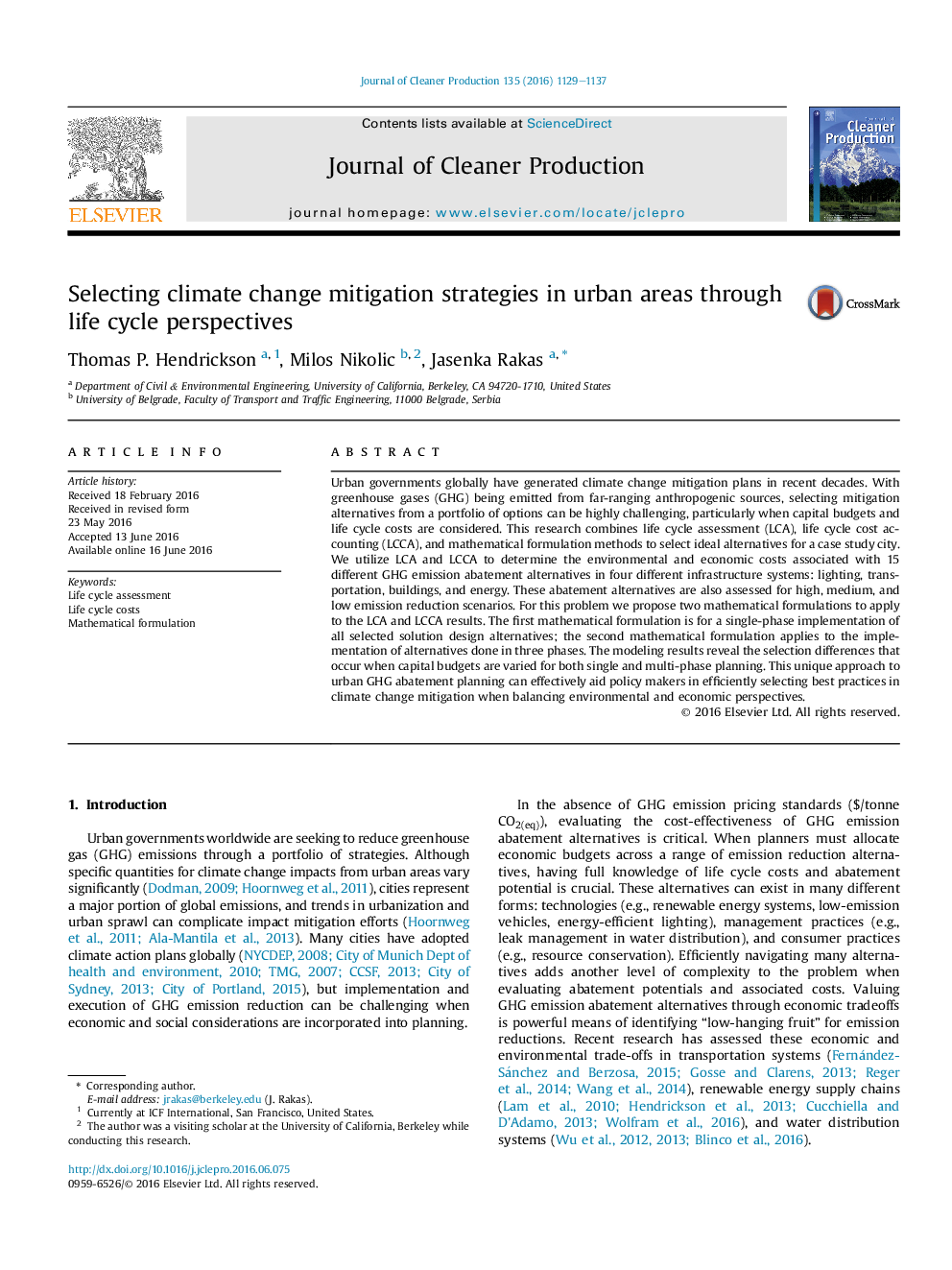| Article ID | Journal | Published Year | Pages | File Type |
|---|---|---|---|---|
| 8101398 | Journal of Cleaner Production | 2016 | 9 Pages |
Abstract
Urban governments globally have generated climate change mitigation plans in recent decades. With greenhouse gases (GHG) being emitted from far-ranging anthropogenic sources, selecting mitigation alternatives from a portfolio of options can be highly challenging, particularly when capital budgets and life cycle costs are considered. This research combines life cycle assessment (LCA), life cycle cost accounting (LCCA), and mathematical formulation methods to select ideal alternatives for a case study city. We utilize LCA and LCCA to determine the environmental and economic costs associated with 15 different GHG emission abatement alternatives in four different infrastructure systems: lighting, transportation, buildings, and energy. These abatement alternatives are also assessed for high, medium, and low emission reduction scenarios. For this problem we propose two mathematical formulations to apply to the LCA and LCCA results. The first mathematical formulation is for a single-phase implementation of all selected solution design alternatives; the second mathematical formulation applies to the implementation of alternatives done in three phases. The modeling results reveal the selection differences that occur when capital budgets are varied for both single and multi-phase planning. This unique approach to urban GHG abatement planning can effectively aid policy makers in efficiently selecting best practices in climate change mitigation when balancing environmental and economic perspectives.
Related Topics
Physical Sciences and Engineering
Energy
Renewable Energy, Sustainability and the Environment
Authors
Thomas P. Hendrickson, Milos Nikolic, Jasenka Rakas,
